Toyota Corolla Cross Vs Honda HR-V Comparison: Heavyweight Battle of Little SUVs

Toyota and Honda’s first foray into the small compact SUV market didn’t go all that well.
The Toyota C-HR, although funky looking, was too small and lacked all-wheel drive. The original Honda HR-V was a packaging marvel with many cool features, but ultimately was too small as well. And the 1.5-liter engine didn’t cut it for that model.
Now Honda and Toyota have righted those wrongs by introducing a pair of new small compact SUVs. They’re more right sized, and full of features consumers are looking for.
Get a Quote on a New Toyota Corolla Cross or Honda HR-VThe Toyota Corolla Cross was introduced for the 2022 model year, as a size smaller SUV to slot under the popular RAV4. The Honda HR-V is all-new for the 2023 model year and is larger than before, better slotting under the spacious CR-V.
So which manufacturer’s small compact SUV is better situated to take on segment front runners like the Subaru Crosstrek, Volkswagen Taos, and Kia Seltos? The only way to find out was to pit the Toyota Corolla Cross vs Honda HR-V in a head-to-head comparison.
Interior and Cargo Space
Corolla Cross: The Corolla Cross’ tall, boxy shape leads to a spacious interior. Headroom is generous front and rear, even with the optional moonroof. Front seat passengers get 39.5 inches of headroom, while rear seat passengers still receive 39.1 inches. This bests the Honda in both regards. Up front, legroom is plentiful with 42.9 inches on tap, but it’s more cramped in the rear as there is only 32.0 inches of legroom.
Still, we find the rear seat of the Corolla Cross more comfortable overall. It includes a fold down center arm rest, and the seat cushion, as well as the door-mounted arm rests are set at the right height.
The tall, flat windows lead to great sight-lines all around. The low center console furthers the spacious feeling up front, but it’s full of hard plastics and not a lot of storage or utility.
In the rear, Toyota claims the Corolla Cross can swallow 25.2 cu. ft. cargo but doesn’t list how much space there is with the rear seats folded flat. This is a minor storage advantage over the HR-V, but the cargo area’s shape isn’t as useful. At least Toyota includes a power liftgate option on the XLE trim, a rare feature in this class.
HR-V: The HR-V easily has the better interior to spend time in. It has better quality materials and a better overall design. We find the front seats more comfortable and prefer the center console set-up. It’s stylish and has a lot of handy storage nooks. It is a bit wobbly though and moves easy when pushed against. And while on negatives, the door panels feel cheap, especially the rear.
The HR-V comes up a bit short in terms of front legroom compared to the Corolla Cross but trumps it in terms of rear legroom with 37.7 inches on hand. Despite this, the HR-V’s rear seat comfort trails the Toyota’s for adult passengers. The seat cushion is positioned low as are the door mounted arm rests. And while on the topic of armrests, there is no possible way to get a fold down center arm rest in the HR-V.
SEE ALSO: 2023 Honda HR-V First Drive Review: They Grow Up So FastAs mentioned, the cargo area is a bit smaller than the Corolla Cross’ with 24.4 cubic feet of space behind the rear seats. There is no option for a power liftgate, but the cargo area’s shape is more useful. And although Toyota does not offer official measurements for the Corolla Cross with the rear seats folded, we feel the HR-V would hold the advantage here with 55.1 cu ft.
Bottom Line: The Honda HR-V has the nicer front seat compartment in terms of comfort, style, and materials. The Corolla Cross holds the rear-seat comfort advantage, although legroom may be an issue. With a tie in this category so far, the final deciding factor is the cargo area which swings towards Toyota thanks to the optional power liftgate and larger cargo area.
Toyota Corolla Cross vs Honda HR-V: Tech and Features
Corolla Cross: The XLE trim level comes standard with 18-inch wheels, softex seating surface, dual zone climate, a power driver’s seat, the larger 7-inch digital gauge cluster screen, a rear cargo cover, and more. Our tester includes the Audio Plus w/ JBL with options package. It adds the larger 8-inch infotainment screen, a JBL audio system, a moonroof, and a power liftgate.
We liked having all the hard buttons around the center console as it made navigating features on the infotainment system easy. They do look out of date though, much like the infotainment system itself. We can’t wait for the new system introduced in the Tundra and bZ4X to make its way into the Corolla Cross.
As with any new vehicle, the vehicle comes with all the latest safety equipment like lane keep assist, pre-collision braking, adaptive cruise control, auto high beam, and more. The XLE trim level adds blind spot monitoring with rear Cross-traffic alert as well as front and rear parking assist which includes automatic braking.
HR-V: The Honda HR-V EX-L includes a dual zone climate control, ambient lighting, leather seats, and driver’s power seat. An important note for Canadian customer is that top HR-V EX-L Navi trim trades the power driver’s seat for an embedded navigation system. There is no power seat available in Canada.
The HR-V’s 9-inch infotainment system is a very average system to use. But we do prefer it the system in the Corolla Cross. The Honda’s color-coding makes it easier to operate at a glance, and wireless phone mirroring is a plus.
Like the Corolla Cross, the HR-V features all the latest safety technology standard on all trims. Stepping up to the Sport and EX-L models add blindspot monitoring while just the EX-L gets low-speed brake control.
Bottom Line: Option for option, safety system for safety system, not much separates the Toyota Corolla Cross vs Honda HR-V when it comes to technology. This category comes down to personal preference more than anything else. We give the HR-V the slight advantage as we currently prefer its infotainment system.
Powertrain, Driving Feel, and Fuel Economy
Corolla Cross: Under the hood of the Corolla Cross is a 2.0-liter four-cylinder engine making 169 hp and 150 lb-ft. of torque. It is paired to a continuously variable automatic transmission that sends power to all four wheels. The power figures are a bit deceiving as the Corolla Cross feels sluggish in almost all driving situations. That stated, it is still decidedly quicker than the HR-V.
We do like the physical first gear feeling that leads to smooth take offs in the Corolla Cross. The vehicle also returns impressive fuel economy figures. The XLE AWD is officially rated at 29 mpg in the city and 32 mpg on the highway.
As Road Test Editor Kyle Patrick put it, this vehicle is silly easy to get in and operate. There’s no fumbling around to figure it out. The XLE trim gets larger 18-inch wheels with 225/55 tires wrapped around them. The Corolla Cross’ personality is more mini-SUV than crossover, and its reflected in its average handling and ride comfort. There is an impressive 8.1 inches of ground clearance though.
HR-V: The Honda HR-V also features a 2.0-liter four-cylinder engine, but it only makes 158 hp and 138 lb-ft. of torque. In this day and age, this is not nearly enough power for a 3,333 lbs. vehicle. Despite only weighing 8 pounds more than the Corolla Cross and utilizing a CVT to drive all four wheels as well, the HR-V feels painfully slow. Highway merging or passing need to be well planned out.
Unfortunately, fuel economy doesn’t benefit from the less powerful engine either. The HR-V EX-L AWD is rated a 25 mpg city and 30 mpg highway. That is 4 mpg and 2 mpg shy of the Corolla Cross respectively.
On the plus side, the rest of the HR-V’s driving characteristics are more enjoyable. It behaves more car-like, thanks in part to its lower 7.0-inch ground clearance. Ride comfort is more compliant, absorbing road imperfections and bumps with more poise than the Toyota. And despite wearing smaller 215/60R17 tires, the HR-V offers more confident handling as well.
Bottom Line: This is another category where it’s a toss-up. The winner will ultimately come down to one’s priorities. The Corolla Cross is the winner when it comes to straight line performance and fuel economy. But the HR-V holds the advantage in ride comfort and road composure.
Toyota Corolla Cross vs Honda HR-V: Styling
Corolla Cross: The Corolla Cross looks a bit like a shrunken RAV4, and that’s on purpose. At 175.6 inches in length, it’s shorter than the Honda HR-V, but the Corolla Cross’ height of 64.8 inches makes it taller. These dimensions help it look the part of a small SUV, which is the goal.
Inside, the Corolla Cross is a bit spartan. As Kyle Patrick put it; Toyota saw the critical success Mazda earned from its minimalist interiors but didn’t quite get the message. The Corolla Cross interior is just sparse.
The lower quality of materials leads to a less attractive design and there is a big chunk of plastic protruding in the middle of the dashboard that attracts the eye. On the plus side, the Toyota does include the nicer gauge cluster which is also more programable.
SEE ALSO: Honda CR-V vs Honda HR-V: Which Crossover is Right for You?HR-V: The HR-V is a tale of two designs. We love the new, sophisticated rear end design, which no longer includes the Ultimate Warrior taillights. The issue is up front. The grille protrudes outward from the front of the vehicle and does not mesh design-wise with the rest of the vehicle. We hope a quick nose job is in the HR-V’s future.
The HR-V is definitely the more crossover-looking vehicle of the two. With the longer body length and shorter roofline, combined with curvier bodywork, the Honda’s car-based roots are obvious. The new roof design means no traditional roof rails can be equipped, which further reinforces the HR-V’s non-SUV status.
Inside, the vehicle feels a lot like the current Civic, which is a good thing. It borrows a lot of interior trim and switchgear from the compact car. The HR-V easily feels more premium inside than the Corolla Cross.
Bottom Line: From an exterior standpoint, the Corolla Cross is a safe, familiar design. The HR-V on the other hand is a tale of good and bad. Inside though, it’s no contest as the HR-V is the superiorly styled vehicle.
Pricing and Value
Corolla Cross: Pricing for the entry level Corolla Cross L 2WD comes in at $23,780 after destination charges ($26,780 CAD). Adding all-wheel drive to any trim level ups the price by $875. The mid-trim LE 2WD is $26,130 after destination charges ($28,980 CAD).
SEE ALSO: Toyota Corolla Cross vs Subaru Crosstrek Comparison: CrossfightOur fully loaded XLE AWD came in at an as tested price of $32,540 after destination charges ($35,880 CAD). This included the $3,300 Audio Plus w/ JBL with Options Package.
HR-V: The entry point of the Honda HR-V is $24,895 for the LX 2WD ($30,680 CAD). That’s a small increase over the Toyota’s starting price. Adding all-wheel drive to any HR-V is also a bit more costly, at a price of $1,500.
The mid-trim Sport 2WD is $26,895 after destination ($35,880 CAD). Once again, that’s slightly more than the Corolla Cross LE 2WD. But the advantage swings heavily towards the HR-V when it comes to our as tested price, with the EX-L AWD costing $30,195 after destination ($39,080 CAD).
Bottom Line: The Corolla Cross holds a slim price advantage over the HR-V most of the way up through the trims. But when it comes to the as tested price of the vehicles we are featuring in this comparison, the advantage is decidedly towards the Honda HR-V.
An important note to make for Canadian consumers though, the Corolla Cross has a large price advantage throughout the models’ lineup.
Toyota Corolla Cross vs Honda HR-V: Verdict
Neither of these little SUVs are class leaders, which is a rare thing to say of both Toyota and Honda. It’s a fiercely competitive segment and there are better choices out there. But there is a reassurance and comfort of owning a nameplate with the legacy of Honda or Toyota. Both have a steep reputation for quality, reliability, and dependability.
So, which to choose?
The Corolla Cross is better on paper, checking off all the right boxes when it comes to features, passenger space, and drivetrain performance. But the HR-V is the better vehicle to spend time in. It has a more pleasing aesthetic, better fitting front seats, and a nicer, albeit slow, driving experience.
The ultimate decision comes down to value, which is regional specific. For American consumers, the HR-V EX-L is the better value as it holds a price advantage over a fully loaded Corolla Cross XLE. But for our Canadian friends, this completely flips as the Toyota is the value champion, holding a decided advantage in pricing.
Become an AutoGuide insider. Get the latest from the automotive world first by subscribing to our newsletter here.

A 20+ year industry veteran, Mike rejoins the AutoGuide team as the Managing Editor. He started his career at a young age working at dealerships, car rentals, and used car advertisers. He then found his true passion, automotive writing. After contributing to multiple websites for several years, he spent the next six years working at the head office of an automotive OEM, before returning back to the field he loves. He is a member of the Automobile Journalists Association of Canada (AJAC), and Midwest Automotive Media Association (MAMA). He's the recipient of a feature writing of the year award and multiple video of the year awards.
More by Mike Schlee



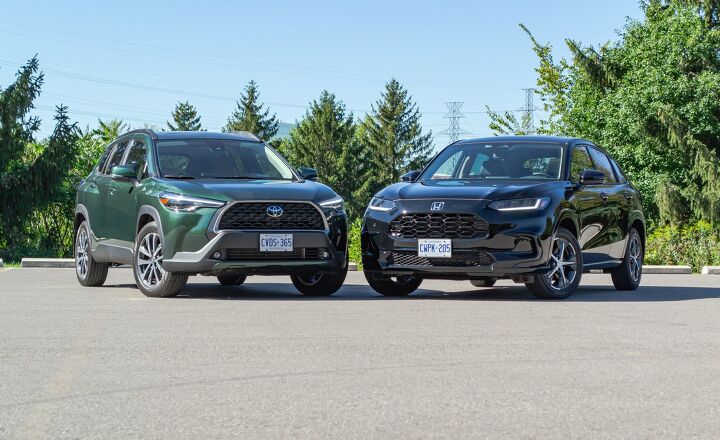


































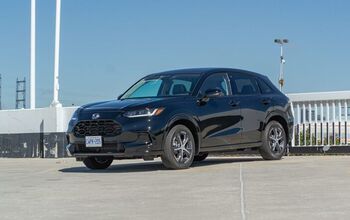


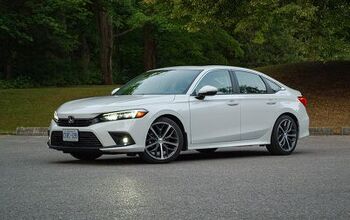
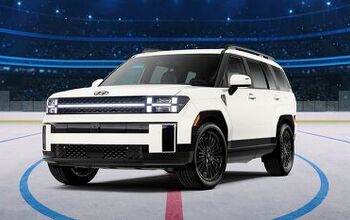


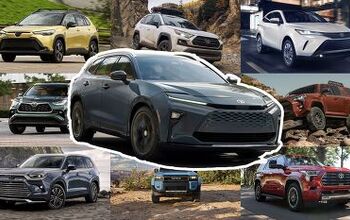


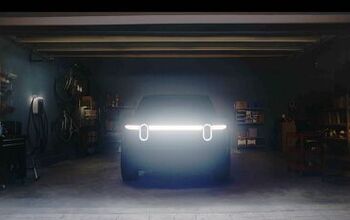


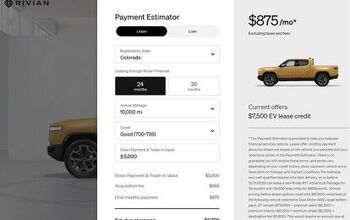
Comments
Join the conversation